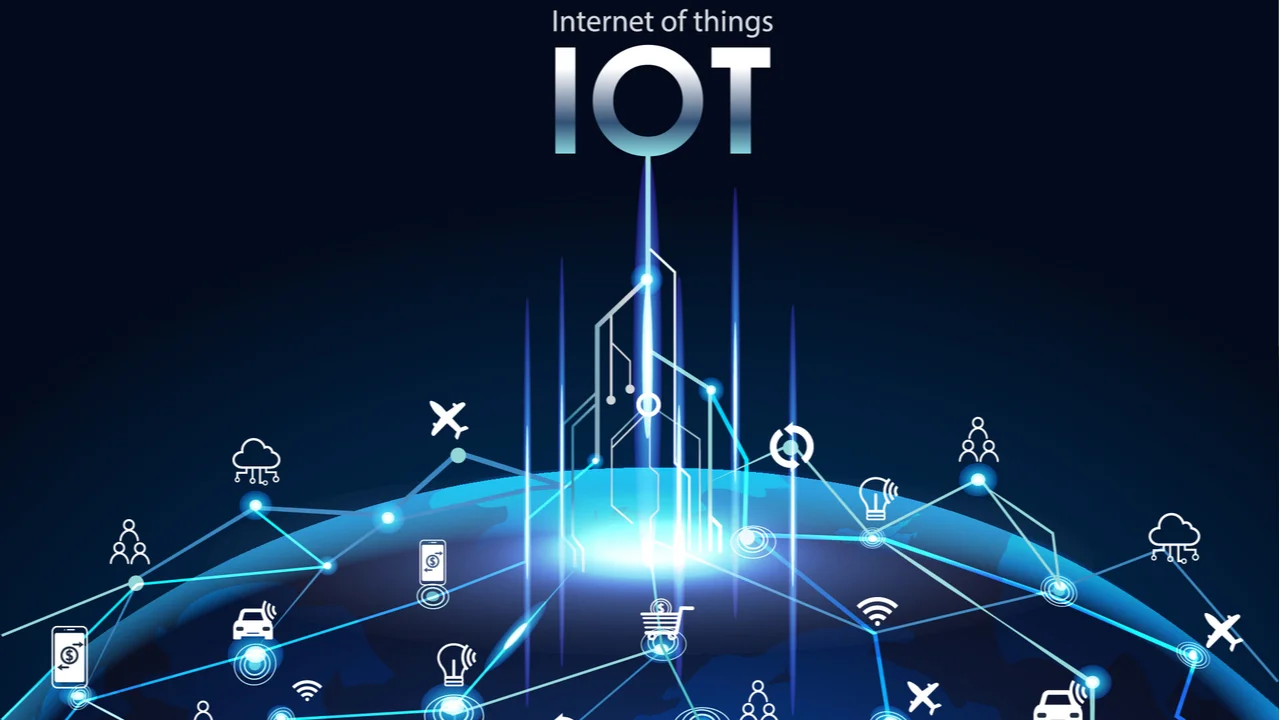A network, in the context of the Internet of Things, connects computing devices, mechanical and digital machinery, objects, animals, and humans and provides distinctive identification for each of these (UIDs). The data can be transmitted across a network without human involvement or engagement with a machine.
Things include humans with implanted heart monitors, farm animals with biochip transponders, cars with integrated tire pressure monitoring, and other instances that can be given an Internet Protocol (IP) address and can transfer data over a network.
IoT is being used increasingly by businesses across various industries to make operations more efficient and better understand their customers so they can deliver better customer service, improve decision-making, and increase the value of the business.
How Internet of Things works?
- The Internet of Things (IoT) ecosystem comprises web-enabled intelligent devices that use embedded systems, such as processors, sensors, and communication gear, to gather, send, and act on the data they get from their surroundings. By connecting to an IoT gateway or edge device, which either sends data to the cloud for analysis or analyses it locally, IoT devices exchange the sensor data they collect. These gadgets occasionally converse with other similar devices, acting on the information they exchange. Although individuals can engage with the instruments to set them up, give them instructions, or retrieve the data, the gadgets accomplish the majority of the job without their help.
- These web-enabled devices’ connectivity, networking, and communication protocols are heavily influenced by the IoT applications implemented.
- IoT can also employ machine learning and artificial intelligence (AI) to help make data collection processes more straightforward and dynamic.
What makes IoT important?
- People who use the internet of things can live and work more intelligently and have total control over their life. IoT is crucial to business in addition to providing intelligent home automation devices. With the help of IoT, organizations can see how their systems function in real-time, gaining insights into anything from equipment performance to supply chain and logistics activities.
- Businesses may automate procedures and save money on labour thanks to IoT. Additionally, it reduces waste, enhances service delivery, lowers the cost of manufacturing and delivering items, and provides transparency into customer transactions.
- As a result, IoT is among the most important technologies of modern life, and it will gain momentum as more companies recognize how linked gadgets can help them stay competitive.
Benefits and drawbacks of IoT
IoT has several benefits, some of which are listed below:
- The ability to transfer data packets over a network while saving time and money
- The ability to access information from anywhere at any time on any device
- The ability to automate tasks to improve the quality of a business’s services and reduce the need for human intervention
IoT has several drawbacks, including the following:
- The likelihood that a hacker may obtain private information rises as the number of connected devices increases and information is transmitted more widely between devices.
- Enterprises may someday have to deal with enormous numbers of IoT devices, perhaps even millions, and controlling and collecting data from all those devices will be difficult.
Every linked device will likely become corrupted if the system has a problem. Since there is no global IoT interoperability standard, it is challenging for devices from various manufacturers to connect.
Conclusion
The Internet of Things (IoT) is the concept of connecting people, vehicles, buildings, and other devices through sensors, data networks, and the internet. In practice, it can mean many things, including smart thermostats that control your home’s heating and cooling, connected cars that let you start your car remotely, industrial robots that respond to data from sensors on a factory floor, and smart televisions that automatically find and optimize your favorite shows, and connected toys that can talk to kids about safety. It is not just about creating a digital ecosystem of devices: It is also about creating a future where everything is connected, interactive, and intelligent. With the help of IoT, you will be able to interact with objects in your home, office space, cars, and other places.
The IoT ecosystem will enable people to connect with their surroundings, automate tasks, and generate insights that help them better understand and act on their environment, making intelligent decisions and taking advantage of opportunities.








2 responses to “Internet of Things (IOT)”
future of the world
IOT will saving lots of time and it’s ả future!